To that end, Gates has led efforts to rehabilitate various abandoned properties that include an elementary school, a power station, a park, and a bank. Since Gates is also an inveterate archivist, the last, a 1920s neo-classical building on Chicago’s South Side, serves as both a contemporary art center and a depository for various collections, among them a cache of “negrobilia” (a once-popular form of tchotchke that caricatured black people) and a trove of vintage glass lantern slides acquired from the University of Chicago’s Department of Art History; once used in lectures covering the subject from the Paleolithic to the Modern era, they appear in the show as part of an installation de-bunking the field’s typically Eurocentric view. As if all of that weren’t enough, Gates also participates in a roots-music band (The Black Monks) and heads Dorchester Industries, a pottery and woodworking enterprise that offers apprenticeship programs funded by restoring and selling cast-off furnishings.
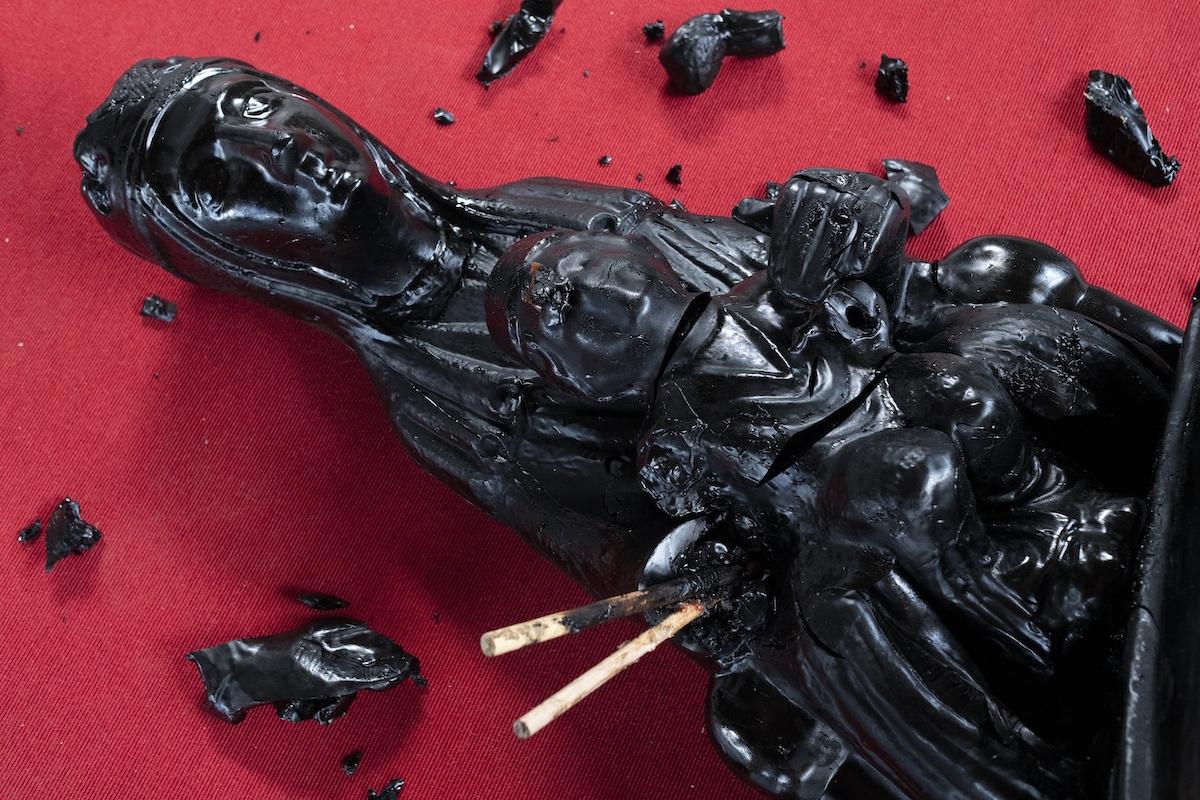
Theaster Gates, Black Madonna, 2017. Bronze and tar, 58 x 26 x 21 in.
While summarizing a career as varied and complex as Theaster Gates’s runs the risk of diminishing it, you could say that the Chicago artist’s work—which comprises sculpture, assemblage, installation, ceramics, architecture, video, and music—lies somewhere in the intersection between salvation and salvage. Each is a form of rescue—one for the soul, the other for the concrete—which speaks to Gates’s explorations of faith, memory, and identity on both a personal and civic level. With Young Lords and Their Traces, the New Museum pulls together the disparate threads of Gates’s ambitions into the first institutional survey of his efforts.
Gates first gained national prominence for a social practice that, put simply, involved various good deeds for his hometown’s African American community, and for Chicago itself. He created the Rebuild Foundation under whose aegis Gates has initiated projects to transform Black neighborhoods by providing “free arts programming…cultural amenities, and…affordable housing, studio, and live-work space.”
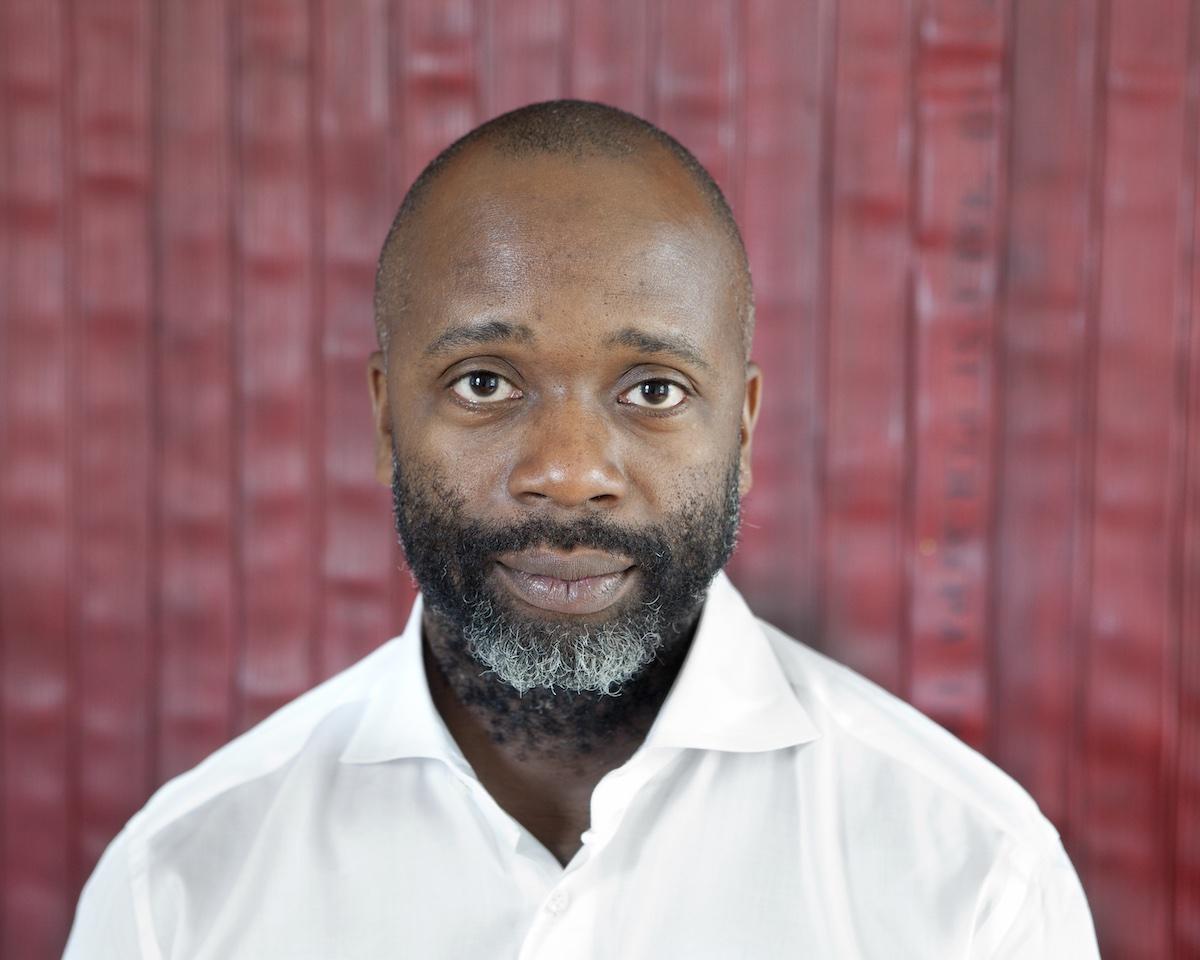
Theaster Gates, Photo: Sarah Pooley
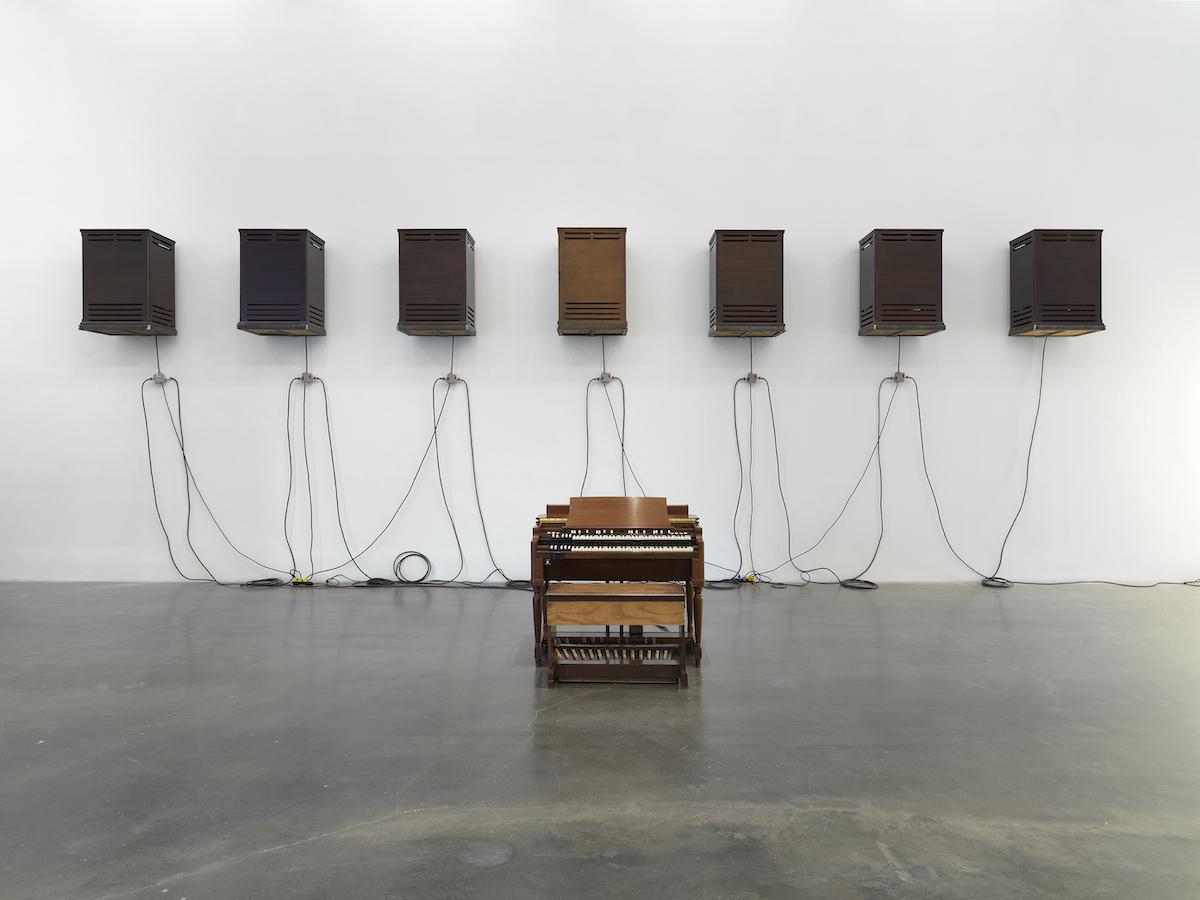
“Theaster Gates: Young Lords and Their Traces,” 2022. Exhibition view: New Museum, New York.
Gates is indubitably a Renaissance Man, as well as a Good Samaritan, but how is he as an artist? The exhibition reveals a rough-and-tumble aesthetic rooted in found objects and materials patinaed with time. The dynamics of remembrance, loss, and rediscovery, as well as how we choose between them, is a driving issue for Gates, as are the importance of faith and hard work which played a large part in his upbringing.
His mother was a devout Christian who would lock herself in the bathroom to pray in privacy. Gates elaborates on this simple act in Bathroom Believer (2018), an homage to her. In it, a group of tiled blocks cut from an old bathroom floor sit in front of a large, freestanding panel of fluorescent lights that blaze metaphorically with the presence of the divine.
Gates similarly acknowledges his father, a roofer by profession, in a series of paintings made with tar paper, bitumen, copper, and rubber sheathing, all of which are central to his trade. Seven Songs for Black Chapel (2022) comprises a septet of silvery monochromes in a line, recalling an aerial view of Gates’s boyhood block. These have been hung just behind the same kettle that the elder Gates used to heat tar on the job.
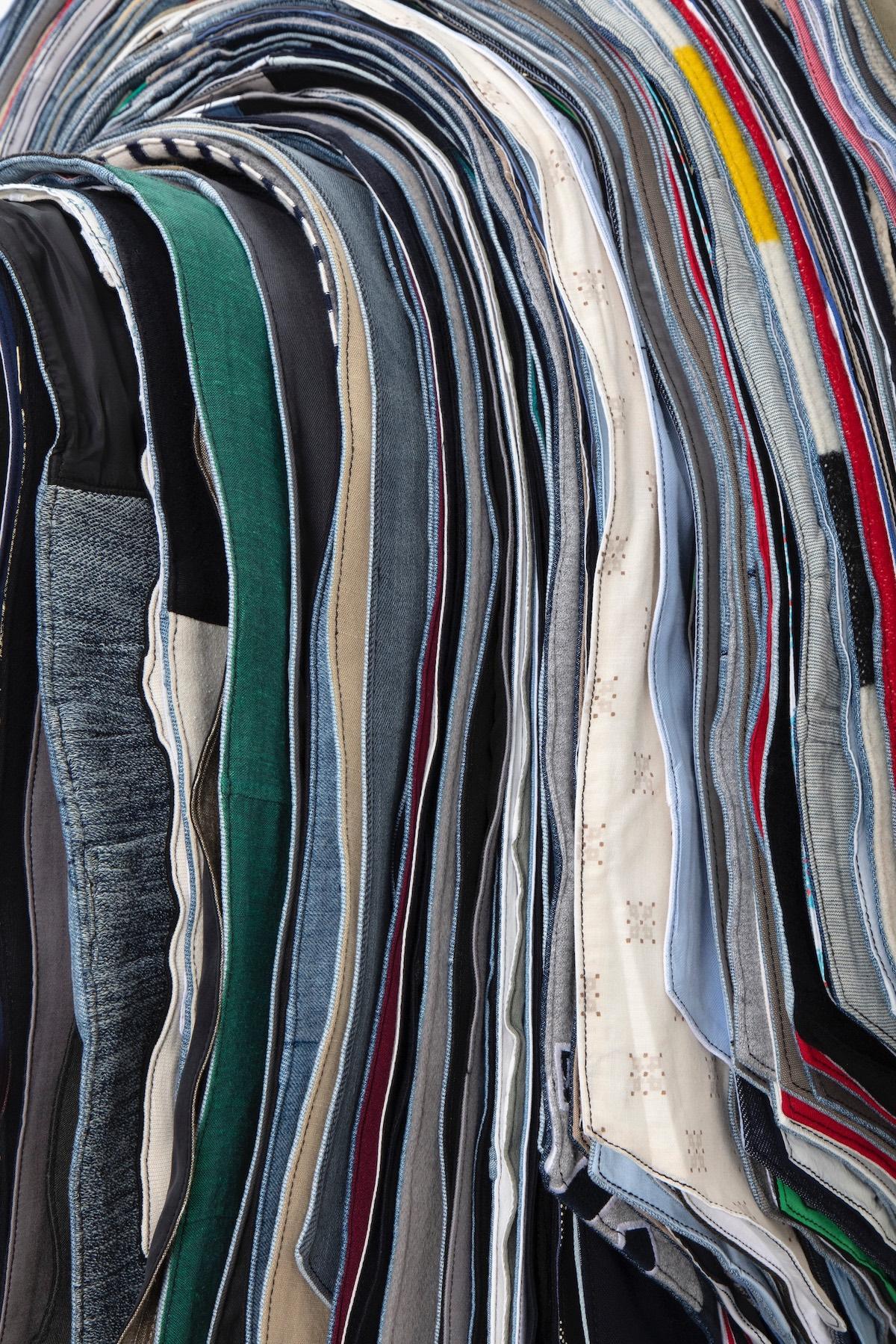
Theaster Gates, Memoriam 3, 2022 (detail). 1970s ascot pattern made from artist's clothing, dimensions variable.
Gates sees Seven Songs as fitting within a continuum exemplified by artists such as Kasimir Malevich and Mark Rothko, both of whom sought spiritual connotations within abstract painting. Less clear is his enthusiasm for Frank Stella (noticeable here in several wooden reliefs done in the style of Stella’s seminal Black Paintings, as well as a real Stella from the late 1950s installed among objects that have inspired Gates), who once famously said “what you see is what you see” to describe his work, negating as it were, the sort of deeper meaning Gates admires.
What unites these works, however, is Gates’s esteem for the sort of “honest” labor ascribed to the working class. “I wanted to take on the idea that being a roofer was good enough for painting” he’s said, and even his Stellas are made of recycled floorboards alluding to construction work.
As Gates sees it, working by hand offers a tactile route to enlightenment, a notion that informs his video, A Clay Sermon (2021), which intersperses close-ups of Gates throwing tea bowls on a pottery wheel with other scenes backed by the artist singing hymns and ruminating in the “vernacular” of a Black preacher. The film plays in a room adjoining another filled with a vast array of ceramic objects of different sizes and styles, suggesting that the artist has taken the lesson to heart.
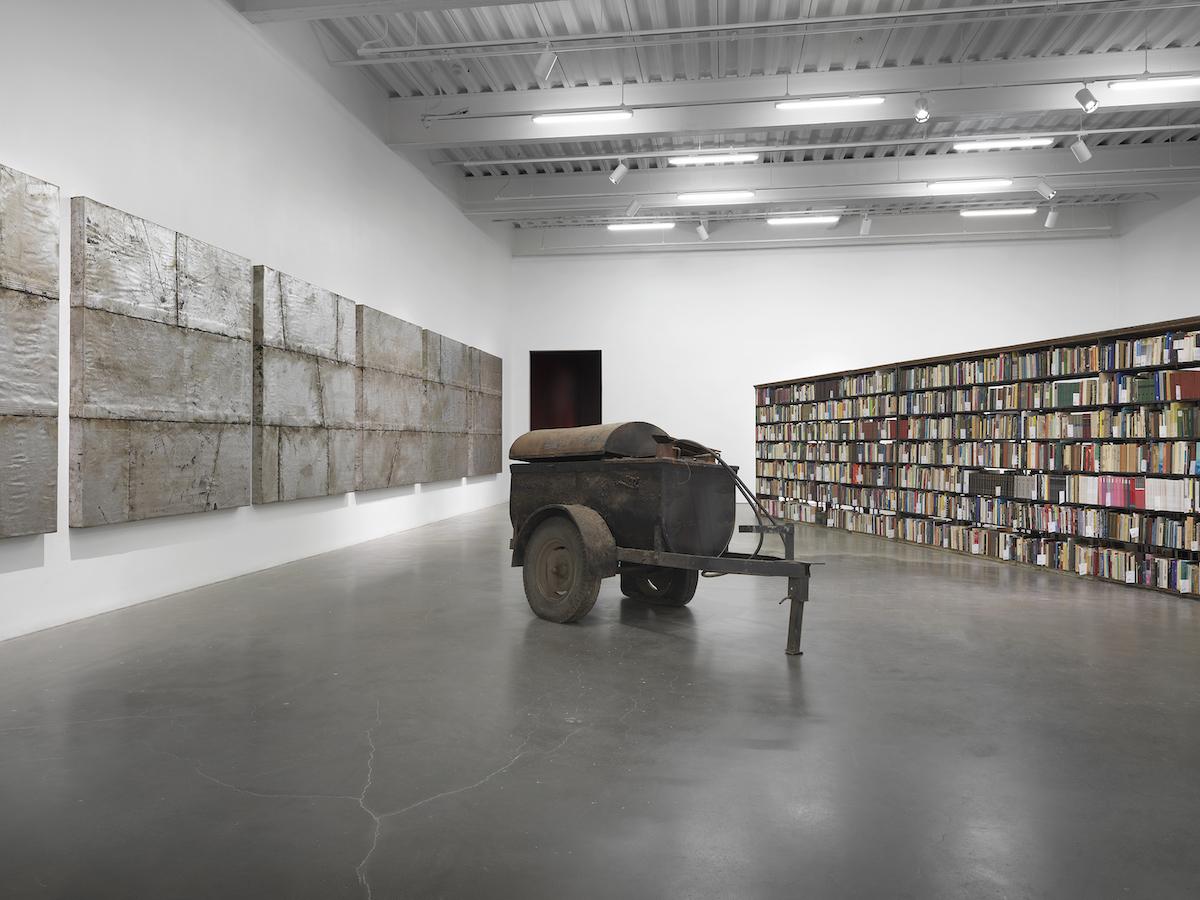
“Theaster Gates: Young Lords and Their Traces,” 2022. Exhibition view: New Museum, New York.
Artists imputing blue-collar conceits to their profession is nothing new, but for artists as successful as Gates, making art is an elite practice within an exclusive circle of institutions and high-worth individuals—many of whom prefer virtue-signaling through buying art rather than actually addressing social injustice. Does this make Gates insincere, or is his work compromised? Absolutely not.
Still, it’s worth noting that for the show’s title, he’s elected to namecheck the Young Lords, a Chicago street gang that evolved into a political organization during the 1960s. They, too, were committed to empowering neighborhoods of color through education and community projects. For their trouble, they became targets of the FBI, something unlikely to happen to Gates.




























